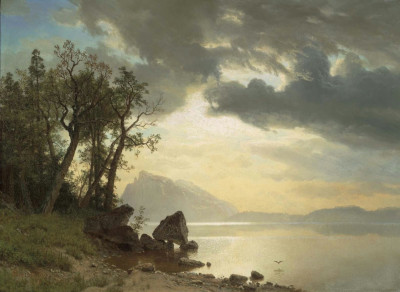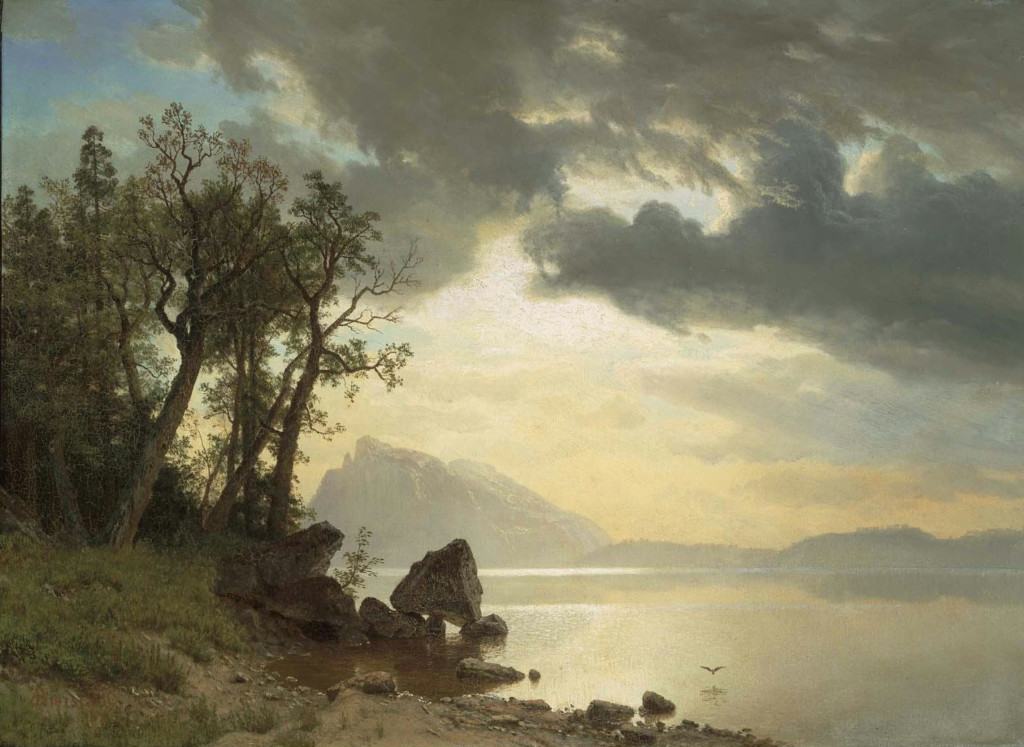Artist Albert Bierstadt would discover many stunning locations around California during his lifetime and would add many of these scenes into his paintings. One such spot was Lake Tahoe, which the artist produced several different views of in the 1860s.
We find in front of us here a classical composition, with foreground elements lining one side of the painting, but leaving the other side entirely open as we look down in to the distance. Several trees provide some vertical balance on the bank on which we are based, reaching up towards the top of the canvas. There is also a small amount of sandy beach, with some rough rocks that allow the artist to display his impressive handling of different material surfaces. Then to the right hand side we find a tranquil water, Lake Tahoe itself, which leads through to some feint outlines of mountains in the far background. Lighting is carefully constructed with dark clouds but enough of a gap for the sun to peak through, which allows effects to be added to the water below. Bierstadt would often vary his skies in this way in order to provide a more interesting contrast within these paintings.
The position of the sun and surrounding clouds also allows the artist to provide a strong shadow cast in front of the trees nearest us, providing an additional contrast between foreground and background, both in terms of palette and light. Bierstadt became incredibly skilled in producing artworks such as this and took inspiration from different environments in Europe and the US, sometimes combining elements of both to create a sort of perfect landscape, which drew criticism from some who demanded accuracy to reality, rather than an idealised form. Others cared not about this and simply wanted the most aesthetically pleasing painting possible. That is how different people can enjoy or disagree with the same artistic style, and why art can be so subjective. Tastes also change over time and even within the artist's over lifetime he would have to adapt to the fashions of the population to make sure his work would sell.
This painting is now in the permanent collection of the Museum of Fine Arts in Boston. It is believed to have arrived there in around 1947, having previously been exchanged between a number of collectors since its inception in around 1867. It joined a number of other lesser known artworks by this artist within the institution but this body o work is still very useful in understanding the technical qualities of the artist and also the types of content that he covered across his career. Most think of him purely as a landscape painter of open spaces, but there were alternative genres and compositions to be found within a large oeuvre that numbered in the many hundreds by the end of his long and successful career.





